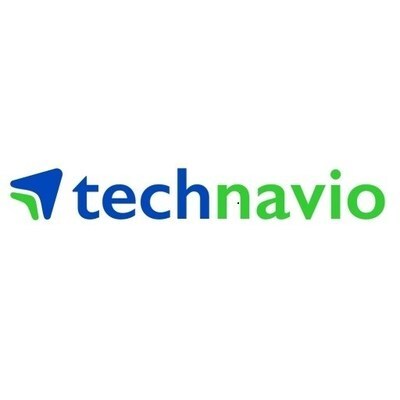Mobile Robots and Drones in Material Handling and Logistics 2017-2037
Press Releases
Aug 15, 2017
LONDON, Aug. 14, 2017 /PRNewswire/ — Automated guide vehicles/carts; autonomous industrial material handling vehicles, autonomous mobile carts, autonomous mobile picking robots, autonomous trucks, and last mile delivery drones and droids: technologies, markets, forecasts
Download the full report: https://www.reportbuyer.com/product/5059907/
This report is focused on all aspects of mobile robotics in material handling and logistics. In particular, we consider the following: automated guided vehicles and carts (AGVs/AGCs); autonomous mobile vehicles and carts/units; mobile picking robots; last mile delivery ground robots (driods) and drones; and autonomous trucks and light delivery vans (level 4 and level 5 automation). We provide technology roadmaps and twenty-year market forecasts in unit numbers and revenue.
Mobile robotics in material handling and logistics will become a $75bn market by 2027. It will then more than double by 2038. These staggering headline figures mask turbulent transformative change underneath: some technologies will rise and transform the fortunes of industries, fuelling growth rates far outpacing recent trends, whilst others will face with decay and obsolesce. We are at the beginning of the beginning of a transformative change, and the time to plan is now. The images below demonstrate this point.
This report is focused on all aspects of mobile robotics in material handling and logistics. In particular, we consider the following: automated guided vehicles and carts (AGVs and AGCs); autonomous mobile vehicles and carts/units; mobile picking robots; last mile delivery ground robots (droids) and drones; and autonomous trucks and light delivery vans (level 4 and level 5 automation).
We provide technology roadmaps and twenty-year market forecasts, in unit numbers and revenue, for all the technologies outlined above (12 forecast lines). We built a twenty-year model because our technology roadmap suggests that these changes will take place over long timescales. In our detailed forecasts we clearly explain the different stages of market growth and outline the key assumptions/conditions as well as data points that underpin our model.
Furthermore, our granular forecast model includes price projections, often at component level, for all the technologies outlined above. Our technology assessments and price projections feed directly into our market forecast model, governing the adoption timescales and the estimated technology market share evolutions.
Our model also considers how technology improvements will increase productivity and/or performance levels, expanding potential target markets or meeting competitive threshold levels with time, and thus raising market adoption. It will also consider how some technologies will lose their value add to emerging technologies, thus facing obsolescence.
We further provide investment/trend analysis, always seeking to put each technology within its greater quantitative as well as qualitative context. We also include company interviews/profiles/reviews. Our company profiles and interviews provide valuable insight on company positioning, strategy, opportunities, and challenges
Incumbents face obsolescence?
AGVs are a mature technology that can safely transport payloads ranging from several Kg to multiple tonnes, essentially acting as semi-rigid distributor conveyer belts covering large areas.
Their navigation technology is evolving. Today multiple options are available ranging from the low-cost wire or magnetic tape guidance to the increasingly popular laser guidance. All however requires follow rigid guide points, thus requiring some degree of infrastructure modification and extended onsite installation. This industry is showing healthy, albeit small, grow rates.
This gives an illusion of security to this mature highly-fragmented business where price competition is rise. The next generation of navigation technology, i.e., infrastructure-independent flexible autonomy, may appear as just as the next natural step in navigation technology evolution. It however has the potential to shatter this illusion and fully redraw the competitive landscape.
This report provides a detailed and quantitative (revenue and unit numbers) assessment, forecasting how sales of AGVs will grow then decline in the next twenty-years. In addition, it will show how autonomous mobile robots (AMRs) will rise, not just largely replacing AGVs but in time diffusing beyond the structured confines of warehouses and factories.
Forklifts will never be the same?
Navigational autonomy will induce a colossal transfer of value from wage bills paid for human-provided driving services towards spent on autonomous industrial vehicles.
This, in turn, will fuel the growth in this material handling vehicle industry (e.g., forklift), creating significant revenues over a business-as-usual scenario. This is despite our technology roadmap showing that hardware commoditisation will slowly devalue such driving services particularly in high-wage regions.
AGVs barely made a dent in this industry. This is because their navigational rigidity put a low cap on their total market scope, keeping them as a small subset of the warehouse/factory automation business. Autonomous mobile robots are radically different however because they will ultimately enable automation to largely keep the flexibility and versatility of human-operated vehicles.
Our technology roadmap suggests that this change will not happen overnight. It will nonetheless take place much earlier than mobile autonomy in general driving since the structured and controlled environment of indoor industrial facilities lends itself better to automation.
Indeed, our model suggests that autonomous forklifts, for example, will remain a tiny share of the global addressable market until around 2023 but will soon after enter the rapid growth phase, causing a transformation of the industry and dramatically raising adoption levels to as high as 70% by 2038. This trend may not yet be on investor presentations of big, say, forklift suppliers, but will inevitable rise up the agenda as a key feature of the industry for years to come.
Mobile picking robots will learn, fast
Mobile robotic picking is generally restricted to stationary robotic arms operating on known objects in controlled environments. The artificial intelligence technology for robotic grasping is however changing with a transition taking place from deterministic scripting towards perception-driving learning.
Today companies are actively generating data to train their robots, and hope to utilize the cloud to rapidly share data and learnings at scale across distributed fleets. The latter will particularly help energy-constrained mobile picking robots because it partially transitions the computational burden to the cloud.
In parallel, soft robotic technology is offering innovative end effector designs that can adapt their shape- without computer guidance/instruction- to the target object. For certain objects and cases, this will dramatically ease the intelligence/computational challenge in picking (identifying objecting, recognising optimal grasp point, developing approach path, etc).
Our report shows how mobile picking units will evolve through different levels of performance (sub-human, approaching human, and potentially exceeding human) over a twenty-year period for both regular and irregular/mixed shaped items. We provide forecast in unit sales as well as revenue.
Disrupting the last mile delivery using mobile ground robots
Last mile delivery remains an expensive affair in the parcel delivery business, often representing more than half of the total cost. Its importance is also growing thanks to a change in the composition of total deliveries with B2C deliveries rapidly taking on a bigger share. E-commerce companies are also pushing next-day and now same-day services hoping to take away that last stronghold of bricks-and-mortar shops: instant customer fulfilment.
Autonomous mobile delivery robots are currently small slow-moving units that will need to return to base to charge. They often need close supervision and can only operate in sparsely-populated and highly-structured environments such as university campuses or special neighbourhood. They therefore are unproductive and easy to dismiss as gimmicks.
This is however only the beginning of the beginning. Our cost projections in the report suggest that these mobile robots can indeed become low-cost. The robots are now in the trial and learning phase, gathering more data and optimising the navigational algorithms. They will become increasingly more adept at path planning, even when GPS signals fail, and at object avoidance. The increased autonomous mobility capability will in turn enable a lower operator-to-fleet-size ratio, furthering boosting overall fleet productivity.
This report paints a quantitative picture of the emergence of last mile delivery mobile robots, clearly explaining the different phases of evolution from trial/early commercial sales toward rapid market penetration and finally towards maturity and then revenue decline, i.e., our model shows that hardware commoditization outpaces volume growth.
Delivery drones: publicity stunt or a game changer in instant fulfilment?
The idea of drone delivery sharply divides commentator opinion: some dismiss it as a mere publicity stunt whilst others consider it a game changer that will bring near instant product fulfilment to e-commerce, stripping traditional shops of their last major differentiator.
Drone delivery faces critical challenges. Individual drones offer limited productivity compared to traditional means of delivery. They can only carry small payloads and battery technology limits their flight duration, constraining them to around 30min radius of their base whilst further lowering their productivity due to the downtime needed for re-charging/re-loading. Safety is a potential showstopper with many accidents waiting to happen.
Drone delivery however is still in its infancy. Its short-term potential, we find, has been exaggerated. However, the technology has long-term future, particularly within the context of the bigger trend to automate as much as of the logistic chain as possible.
Indeed, we find that delivery drone sales will remain limited until 2027/28. Demand will then start to taking off in remote or sparsely-populated (e.g., suburbs), ultimately enabling companies to establish large accumulated fleets. Despite their ultimate rise, however, drone delivery will remain only a small part of the much bigger commercial drone story.
Trucking: a large attractive business to autonomize?
Trucking is a big business. In the US, the trucking industry revenues are in excess of $726bn. This is the equivalent of combined revenues of Apple, Amazon, Google, Microsoft, IBM, Baidu and then some (a lot) more.
It is also a big employer: the US Bureau of Labour Statistics suggests that 1.79m people work in this sector driving 7.2m trucks for inter-city freight transport earning an average salary of 41.3 k$/year. No wonder this is a hot topic now then.
Trucking is also potentially an easier target than general passenger cars. This is because it spends much of its time in intercity roads which are less congested and less sinuous than city ones. The driver may remain in the vehicle, but the commercial incentive, even in this hybrid approach, exists because it may justify a relaxation of the rulebook which limits driving hours. This can therefore boost driver productivity and asset utilization.
In this report we forecast how different levels of automation (level 4 and 5) will rise and fall in trucking over the next twenty years. We offer detailed projections for the future cost of automation hardware systems (Lidar, radar, IMU, GPS, PC, etc) based on historical learning curves of similar technologies. Our forecasts are expressed in unit numbers as well as in value- both at the level of the truck itself and the automation part.
Download the full report: https://www.reportbuyer.com/product/5059907/
About Reportbuyer
Reportbuyer is a leading industry intelligence solution that provides all market research reports from top publishers
http://www.reportbuyer.com
For more information:
Sarah Smith
Research Advisor at Reportbuyer.com
Email: query@reportbuyer.com
Tel: +44 208 816 85 48
Website: www.reportbuyer.com
View original content:http://www.prnewswire.com/news-releases/mobile-robots-and-drones-in-material-handling-and-logistics-2017-2037-300504314.html
SOURCE ReportBuyer



